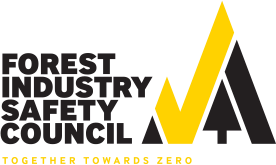SAFETY ALWAYS
COMES FIRST
Forestry is a high-risk industry, so safety in the forest is key to a long career.
In the forest, we look out for each other and protect each other like family, making sure each other is safe on the job.
FORESTRY INDUSTRY SAFETY COUNCIL
The Forestry Industry Safety Council (FISC) was established in response to the 2014 Independent Forestry Safety Review. FISC works across the full plantation forestry sector, representing one voice in health and safety.
Its overall objective is zero fatalities and serious harm: Together towards zero. There is a real opportunity to work in partnership and to think differently about achieving safe outcomes.
The Forest Industry Safety Council includes representatives of forest owners, forest managers, contractors, farm foresters, ACC, WorkSafe, unions and workers. It works to reduce and ultimately eliminate deaths and serious injuries in our plantation forests by doing the following:
-
Improving leadership of health and safety
-
Providing easy-to-use forest safety resources through www.safetree.nz
-
Sharing better information on what’s causing harm
-
Getting companies and workers more competent
-
Helping the sector follow the Health and Safety at Work Act 2015.
FISC provides resources, on-going training and certification to people at all levels in the industry aimed at keeping them safe and healthy in our forests.
Click here to find out more about FISC.
SAFETREE
Safetree delivers health and safety initiatives to the forestry industry. It is operated by the Forest Industry Safety Council, a partnership of workers, industry and government.
It provides resources designed for people working in forestry, as well as certification schemes that show workers have been independently assessed as able to work safely.
Certification does not replace other training. It is a way to confirm trained workers are still on top of their game.
Contractor Certification provides a benchmark for health and safety systems and ensures everyone is held to an industry standard. Being certified lets contractors demonstrate their professionalism and provides assurance to the forest owners, managers, workers and their whānau.
There are now 316 Safetree Certified Contractors in New Zealand, an estimated 60% of the sector, and more forest managers are requiring the certification as a pre-requisite for work.
To become certified, contractors must complete an online assessment and field audit which is assessed against industry good practice. Certified Contractors are then added to the public Safetree Certification Register on the Safetree website.
Worker Certification is a way for Tree-Fallers and Breakers-Out to keep their skills up-to-date.
To become certified, workers must pass an assessment by an independent assessor. The assessment tests their knowledge of the Approved Code of Practice (ACOP), best practice guides and unit standards. Practical skills are also checked, including how to manage risks. To stay certified, workers must be re-assessed annually to ensure they stay up-to-date with changes to health and safe practice. If workers do well on their assessments for three years, there is scope to reduce how frequently they need to be re-assessed in future.
Click here to find out more about Safetree and view the latest forestry safety statistics.
DRUGS AND ALCOHOL
There is absolutely no place for drugs and alcohol in a forestry crew.
Having any drugs or alcohol in your system while working in the forest – even if you're hungover from the night before – creates a major safety risk to you and other members of your crew.
Therefore forestry companies take a zero tolerance approach to people using drugs and alcohol in a way that could affect safety or their job performance.
Along with education and training, policies and procedures, rehabilitation and case management, forestry companies use drug testing as a tool to keep forestry work sites safe from drugs and alcohol.
In a forest crew you can expect to be asked to take a pre-employment drug test (usually a urine test), then be randomly drug tested on the job. You may also be asked to take a drug (and/or alcohol breath test) test if you have been involved in an incident at work.
You may also be asked to take a test if your boss has reasonable cause to believe you may be under the influence of drugs and/or alcohol.


